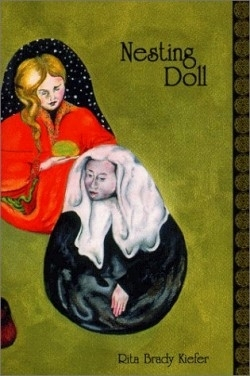Nesting Doll
The concept of committing one’s life to religious seclusion and then turning away from it is strikingly addressed as the first poem entitled “Ex-Nun in a Red Mercedes” takes off with
Great car I tell my friend as we speed from
the convent, my shaved head
barely sprouting stubble, stuttering hands
not a clue what to do with the seatbelt, one of many inventions conjured to save the body
those 18 years my own was on ice.
The author presents twenty poems that weave through the trials of womanhood and the seeking of the divine by immersion in a religious order of sisters.
Her voice flows throughout these poems trying to make sense of a world within the confines of a cloistered life. She examines her own existence and the lives of other women, ranging from Marie Curie to Sister Dorothy Kazel, a friend who was murdered in Salvador. She reveals the psychological experience of being a young girl who voluntarily commits herself to a life as a sister in a convent, shocking her mother. The poems gradually reveal more and more of the intimate story behind this woman and her restricted life choice.
In the final storylike narrated poem, “Nesting Doll,” the voice is spoken through different characters and different dolls. The sequence is fluid, yet somewhat opaque. It reads like so many portions of a woman’s searching mind and soul, piecing together a wisdom based on images in her life. Stark truths are revealed, while veins of hope trickle through the dolls? growing awareness of themselves.
The poems delicately veil any obvious reasons why or how the woman ended up in a convent. Her strength and grace, however, grow as the pages turn, a healing seems to occur. The line: “The Rule at first a foreign language now her mentor” from “Sister Mailee Sequence” shows an acceptance of this daily path. There is some sadness or perhaps melancholy throughout the book, but not in a debilitating Anne Sexton-type way. Instead it seems to be just there, naturally, as any other part of “womanness” flows, without guile or guilt.
This book has an almost feminist slant, yet, it is colored with a spiritual divinity that is intriguing. The combination of this subject within the rhythmic poetry form is worthy of a quiet read in itself.
Disclosure: This article is not an endorsement, but a review. The publisher of this book provided free copies of the book to have their book reviewed by a professional reviewer. No fee was paid by the publisher for this review. Foreword Reviews only recommends books that we love. Foreword Magazine, Inc. is disclosing this in accordance with the Federal Trade Commission’s 16 CFR, Part 255.

